Every notable country you can think of has a distinctive art form that reminds people the world over of its unique style, heritage or culture. The matadors of Spain, the gondolas of Venice and the minarets of Turkey, all conjure and inspire a vivid image of their place of origin or prominence. Similarly, if I were to name a piece of art that best represents the vitality and vibrancy of Pakistan, Truck Art would be the first to come to mind.
Pakistan as a whole is a colorful country that employs the full range of hues and colors of the rainbow. Our springs are a burst of color, and our autumns golden and brown. The fashion weeks explore the palette of shades to the fullest as well, and our dinner cuisine often looks as good as it tastes. We love to romanticize everything we come across, and adorn everything from our tablecloths to our brides. So when it comes to the transport, why should it be any different?
If Dubai has Lamborghinis for the police force, our truck drivers prefer to travel in style as well! What you will have to visit a museum for in other places can be witnessed on the back of a truck stuck in a traffic jam in the countryside here. The whimsical nature of these decorations means they are very hard to forget, and even harder to ignore. Whether it’s the floral paints or the poetic verses inscribed on the body, some aspect of the decoration is bound to catch your eye.
The kaleidoscopic exhibition is not only a visual treat but also delivers another sensory input. The chains, pendants and other shaped and decorated pieces of hammered metal dangling from the bumpers of the trucks, besides from other miscellaneous hooks, clang together when the vehicle is in motion. This serves as a symphony to break the monotony and silence of long freight journeys, and is a characteristic sound of these trucks. It has also earned them the nickname of Jingle trucks, referring to the cacophony it inspires.
While Truck Art is also found in regions of South America and India, the designs don’t hold a candle to the elaborate work that can be seen so commonly on the streets of Pakistan. These vehicles are always a sight to behold, despite being found pretty much at every turn. To fully appreciate the aesthetics, you need a good eye for detail. The ubiquitous hammered metal and mosaic style are easy enough to spot. But despite their general in-your-face vibe, most of the adornments, like the exquisite mirror and wood work, the smaller plastic ornaments and the oftentimes deep prose, hide in plain sight. And these more subtle details are what make truck art truly unique.
The history of truck art in Pakistan is not quite as easy to trace as you would expect. According to speculations, it can be seen in form as early as the 1940s, soon after the partition of the subcontinent. The companies hoping to monopolize the freight business came up with painted logos so they could be easily recognized by their illiterate customers of the time and hence inspire consumer loyalty. And as It turned out, the better and more colorful the logos, the more people were attracted to the business.
The decorations soon developed into something more than just a distinction. They were now a way for drivers and owners to show off their rides, and the trucks became the pride and joy of those associated with it. Artisans and decorators opened up workshops and the embellishments were soon a necessity to drive out the rivals and keep the competitive edge.
Most of the truck drivers in Pakistan hail from Khyber Pakhtunkhwa and are hence Pathans. But surprisingly, only 14 per cent of the writing on the vehicles is in Pashto. Punjabi graces only 10 per cent of the bodies of the containers while Sindhi is less than 1 per cent. It is therefore our national pride and language, Urdu, that adorns most trucks on the road, at 75 per cent of all calligraphy and verses.
There is a definite pattern to the chaos. Even if you don’t understand how there can possibly be a trend to what appears on the colorful and gargantuan mass before you, you can rest assured that there is. The taj, or prow, in the front of the truck is often used for the representation of the sacred. Hence paintings of mosques and words of religious significance are common. The sides of the container can be adorned with anything from animals to waterfalls and depend entirely on the owner. The back, however, is usually the most interesting and features smaller floral designs or writing along with one huge portrait or mosaic.
The designs often have a regional or religious significance. Karachi is the main center for the decor and painting of these trucks, and others exist in Quetta, Peshawar, and Lahore. Every region in the country has its own style of bejeweling. The vehicles from Rawalpindi and Islamabad have a lot of plastic work, and artisans cut out the colored sheets in different shapes and layer them for an exquisite effect. While Karachi specializes in camel bone ornaments, the stainless steel peacock designs are popular in Punjab as well. The works in Quetta and Peshawar have wood as a major material, and the Peshawar trucks often have more calligraphy than simple illustrations.
These trucks can also be a great source of entertainment on a long journey with nowhere else to look. You can almost always find a humorous one liner or two on the back bumper of these vehicles. Who hasn’t seen a “Maa ki Dua, Jannat ki Hawa” at least once while traveling in Pakistan? Or a “Maalik ki gaari, Driver ka paseena, chalti hai road per ban ke haseena,” that elicits a grin and showcases how highly the owners and drivers think of this beauty that earns them their bread and butter?
If it’s not religious sentiments adorning these trucks, it’s proclamations of unrequited love. But it’s always something close to the heart. And sometimes the deeper message takes a little while to sink in. “Haran ahesta bajaen, Qaum so rahi hai,” requests the back of a truck. And perhaps that’s when truck art really earns the right to be called art; it provokes thought and feeling while representing the common man of Pakistan.



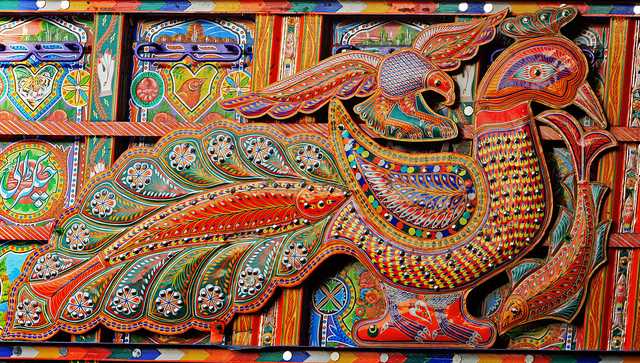

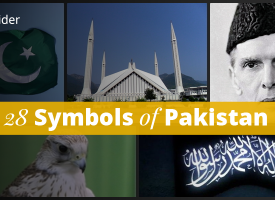
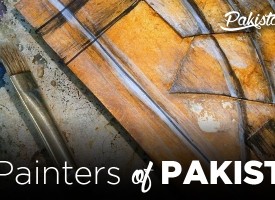
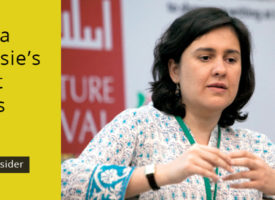
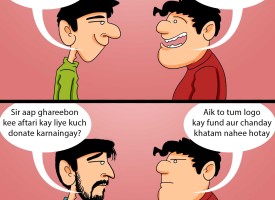
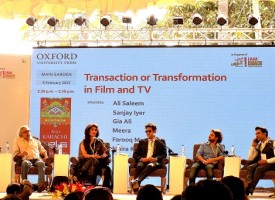
Very Nice Art and i am proud of pakistani and love Truck Artists whom played a vital role to create a very positive image around the world for their nice painted products here http://truckartpakistan.com/ which are loved by the people around the World.
Marc, These might cost you about $30 to 50$ thousand dollars…an HTV license.
Awesome. never been to Pakistan but this article makes me want to go there in the next installment of my http://www.kickasstrips.com world trip.
Do you know how much these vehicles would cost in Pakistan? would be great to buy one and drive the country….